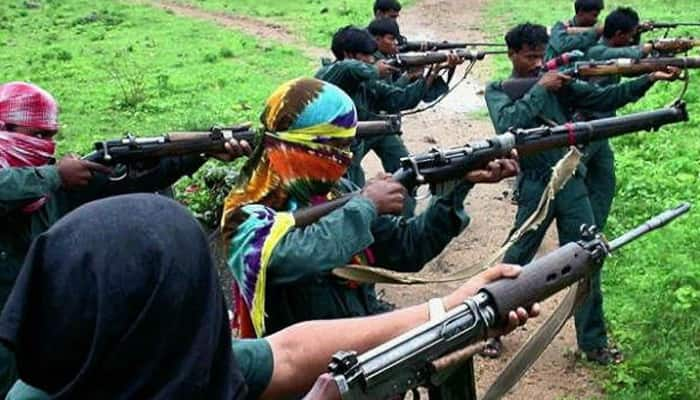Red Corridor and the Ban in India: Understanding the Implications
India has long been grappling with issues related to left-wing extremism, especially in its central and eastern parts. The Red Corridor, a region that stretches across 10 states, has been the epicenter of this problem for decades. In an effort to curb the menace of Maoist insurgency, the Indian government has implemented a series of measures, including a ban on several organizations operating in the region. In this article, we will explore the concept of the Red Corridor, the reasons behind the ban, and its implications for the affected communities and the country at large.
 |
| Red Corridor and the Ban in India: Understanding the Implications |
Understanding the Red Corridor
The Red Corridor is a term used to describe the region in India that is affected by left-wing extremism. It spans across 10 states, including Andhra Pradesh, Bihar, Chhattisgarh, Jharkhand, Maharashtra, Madhya Pradesh, Odisha, Telangana, Uttar Pradesh, and West Bengal. The region has been plagued by violence and insurgency for several decades, with Maoist rebels being the primary perpetrators.
The Maoist Insurgency
The Maoist insurgency in India has its roots in the Naxalbari uprising that took place in West Bengal in 1967. The movement was led by Charu Majumdar and Kanu Sanyal, who advocated for armed struggle against the Indian state. The movement soon spread to other parts of the country, and the Communist Party of India (Marxist-Leninist) was formed in 1969. Since then, the movement has undergone several transformations and has split into various factions.
The Maoist insurgency in India is known for its brutal tactics, including the killing of civilians, security personnel, and politicians. The Maoists have also targeted infrastructure and economic assets, such as mines, railway tracks, and communication networks. The insurgency has had a significant impact on the affected communities, who have been caught in the crossfire between the Maoists and the security forces.
 |
| Red Corridor and the Ban in India: Understanding the Implications |
The Ban on Maoist Organizations
In 2009, the Indian government banned the Communist Party of India (Maoist), along with its several front organizations, under the Unlawful Activities (Prevention) Act. The government cited the Maoists' violent tactics and their aim to overthrow the Indian state as the reasons for the ban. The ban was also aimed at cutting off the Maoists' sources of funding and support.
The ban was followed by a crackdown on Maoist organizations and their sympathizers, with thousands of people being arrested across the country. The government also launched a military offensive, known as Operation Green Hunt, to flush out the Maoists from their strongholds in the Red Corridor.
 |
| Red Corridor and the Ban in India: Understanding the Implications |
Implications of the Ban
The ban on Maoist organizations has had significant implications for the affected communities and the country at large. While the ban has weakened the Maoists' organizational structure, it has also led to a militarization of the region. The security forces have been accused of human rights violations, including extrajudicial killings, torture, and rape. The crackdown has also led to the displacement of thousands of people, who have been forced to flee their homes due to the conflict.
The ban has also had an impact on civil society organizations and activists working in the region. Many of them have been accused of having links with the Maoists and have faced harassment and persecution by the security forces. The ban has also led to a curtailment of civil liberties, with the government imposing restrictions on the media and freedom of expression.
 |
| Red Corridor and the Ban in India: Understanding the Implications |
Conclusion
The ban on Maoist organizations in the Red Corridor has been a controversial measure, with both supporters and critics. While the ban has weakened the Maoists' organizational structure, it has also led
While the ban has weakened the Maoists' organizational structure, it has also led to a militarization of the region, which has had a significant impact on the lives of the people living in the affected areas. The government needs to ensure that its counterinsurgency measures do not violate the human rights of the people and lead to further alienation and resentment.
The Maoist insurgency is a complex issue that cannot be solved through military means alone. The root causes of the problem, such as poverty, social inequality, and lack of development, need to be addressed. The government should focus on improving the quality of the people in the affected areas and providing them with services such as healthcare, education and clean water.
In my mind is, There needs to be a dialogue between the government and the Maoists to find a peaceful resolution to the conflict. The government needs to reach out to the Maoists and address their grievances, such as land rights and environmental concerns. The Maoists, on their part, need to renounce violence and come to the negotiating table in good faith.
In conclusion, the ban on Maoist organizations in the Red Corridor has had significant implications for the affected communities and the country at large. While the ban has weakened the Maoists' organizational structure, it has also led to a militarization of the region and violations of human rights.
read more:Nathu La Pass, Sikkim: An Insightful Guide
FAQs
What is the Red Corridor in India?
- The Red Corridor is a term used to describe the region in India that is affected by left-wing extremism. It spans across 10 states in central and eastern India.
Why did the Indian government ban Maoist organizations?
- The Indian government banned Maoist organizations in 2009, citing their violent tactics and their aim to overthrow the Indian state as the reasons for the ban.
What are the implications of the ban on Maoist organizations?
- The ban on Maoist organizations has had significant implications for the affected communities and the country at large. While the ban has weakened the Maoists' organizational structure, it has also led to a militarization of the region and violations of human rights.
What needs to be done to resolve the Maoist insurgency in India?
- The root causes of the Maoist insurgency, such as poverty, social inequality, and lack of development, need to be addressed.
How can the government ensure that its counterinsurgency measures do not violate human rights?
- The government needs to ensure that its counterinsurgency measures do not violate the human rights of the people and lead to further alienation and resentment.

Post a Comment